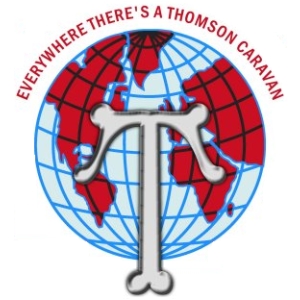|
| |
|
|
CALOR GAS SAFETY PRECAUTIONS |
CALOR GAS SAFETY PRECAUTIONS
Use of Calor Gas in Caravans |
1. |
Use and store cylinders in vertical position with the valve uppermost. Cylinder housings where provided must be wall ventilated and fireproofed. |
| 2. |
DO NOT USE UNSUITABLE APPLIANCES OR MATERIALS.
Use only appliances, flexible tubing, nozzles and hose clips approved by Calor Gas Limited. Keep hoses as short as possible end fix securely to nozzles with hose clips. Examine flexible hose regularly and replace perished or damaged, rigid piping, either copper or steel should be used for the internal carcase. |
| 3. |
DO NOT CHANGE CYLINDERS IN THE PRESENCE OF NAKED LIGHTS.
Before changing a cylinder, close all appliance taps including permanent pilots and extinguish all other naked lights. Close empty cylinder valve by turning valve handwheel clockwise. Using a Calor spanner disconnect regulator/cylinder valve union by turning nut clockwise (these threads are left-handed) and replace black plastic cap or plug. |
| 4. |
DO NOT USE TOOLS TO OPERATE A CYLINDER VALVE.
Check that valve of replacement Cylinder is closed before removing black plastic cap or plug. When changing cylinder make sure that neoprene washer on regulator or pigtail union is in place, replace washer if unduly compressed, worn or damaged. Check that connections are clean; dirt will cause leaks and damage the washer or searing. Connect replacement cylinder, using Calor spanner in anti-clockwise direction, using sufficient force to prevent leakage. |
5.
|
DO NOT USE A NAKED LIGHT WHEN LOOKING FOR LEAKS.
With all appliance taps still closed open cylinder valve slowly and check that there is no leakage at union connection. Calor Gas has a distinctive smell which gives warning of a gas escape, and if a leak is suspected, brush the connection with soapy water or liquid detergent. A gas leak will form bubbles, and if the leek cannot be easily repaired, close all cylinder valves and immediately inform your Dealer. |
| 6. |
DO NOT USE FUEL BURNING APPLIANCES WITHOUT ADEQUATE VENTILATION.
The dangers of inadequate ventilation cannot be over emphasised, particularly where cookers and heaters are used in confined spaces. This is equally applicable to appliances burning oil or coal.
Ventilation for unflued appliances must be provided of at least 1in² (6.5cm.²) of free ventilating area for each 1000 Btu/h input, or 15m. ² (97 cm. ²) whichever is the greater, divided equally between high and low level. As a guide, a two burner hotplate would need at least 15in. ² (97 cm. ²) , a griller hotplate 25in. ² (161 cm- ²) , B600 Cooker 3 3in. ² (213 cm. ²) and a sink instantaneous water healer 40ln. ² (258 cm- ² ).
Where an appliance is flued to the outside air it is also necessary to provide a purpose designed vent. This must be at least the same free area as the cross sectional area of the flue collar on the appliance, or 12in. ² (77 cm. ² ) whichever is the greater.
When rooms are partitioned off, ventilation requirements apply to each separate compart ment.
Ventilation is in addition to that required for occupants and oxygen consuming appliances other than gas-fired .
Adjustable ventilators must always be open when gas is being used. Fixed ventilators or air inlets must not be stopped up with paper or other material. Where practicable, turn off all appliances before retiring to bed. |
| 7. |
Portable appliances must not be connected in the gas supply when caravans are being towed. |
| 8. |
When lighting an appliance make sure you apply a lighted taper or match to the burner before
turning on the gas. |
| 9. |
Maintain your gas equipment in good condition Consult your Dealer if you are in any doubt
about the safety and efficiency of your Calor Gas system. Heating appliances should burn
with a steady flame without smell or the formation of soot. |
| 10. |
Ask your Dealer to make a periodic inspection of your installation. The charge for this will be repaid by the safe, economical and efficient operation of your appliances. |
 |
Issued by: |
Technical Publication Department
Calor Gas Limited
Central Laboratories
Coombelands, Addlestone
Weybridge, Surrey |
|
| Download in PDF Format |
|
|
|
|
|
|
|
| |
| |
 |
| |
Copyright © 1998 - 2015 Thomson T-Line History & Information |
|
| |
Disclaimer - The information provided on this Website site is offered with no warranty as to the authenticity, suitability or competence of the individual, company or service quoted here in. The Website shall not be liable for any damage or difficulty, direct or indirect, arising from utilization of the information contained within these pages. Thomson T-Line History & Information is not responsible for the content of external website's. |
|
| |


